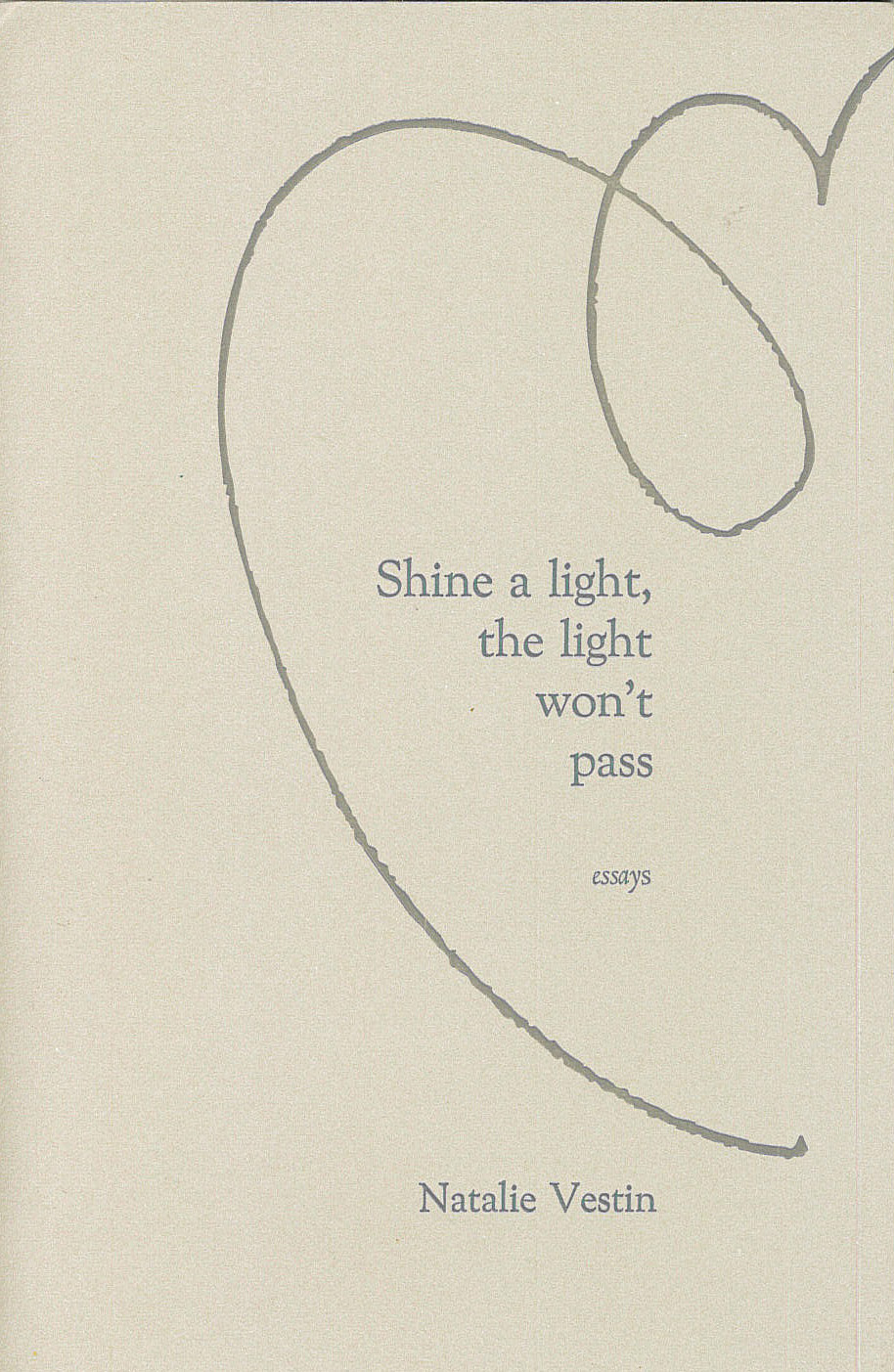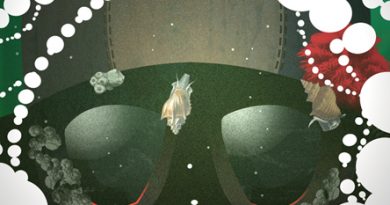Shine A Light, The Light Won’t Pass by Natalie Vestin
– Reviewed by Penny Boxall –
Natalie Vestin has some serious accolades in the realms of both literature and science. With an MA from the University of Minnesota, where her research focused in the epidemiology of homicide, she has an exciting CV which I was eager to see underpinning the volume in hand. A ‘non-fiction chapbook’, Shine A Light, The Light Won’t Pass is an attractive, understated publication, pleasingly laid-out and typeset, it seems, to give the reader maximum ‘headspace’ while taking in the contents, encompassing pieces titled ‘Moon: a physiology’ and ‘The astronomer’s heart is made of iron’.
Vestin begins with ‘Contract’, a treatise on the nature of matter between stars and humans. It is soon clear that we are dealing with something a bit unusual here: the author’s perspective spirals outward, taking us into a world where the personal moves to the macrocosm of space, and the universe is compacted down into the level of the atom. ‘Contract’ sees the
[a]rm that brings things together in a hot compress; Milky Way a child’s faint idea of sex, Barbie and Ken smashing together together together. Arm that faint idea.
The syntax is notational, almost fragmentary, in a way which could be irritating in other hands; but I found myself trusting Vestin and her tone – there is always, throughout the volume, an integrity, a precision, a rightness to what she is saying. She knows her stuff, so we’d do well to go along with it. Further on, we have the following:
What will be star begins a tumbling toward. Everything draws in, immense mass in a tightening space. Temperature rises.
This is language before matter: a sense of clever rhetoric gathering and forming in the space before the big bang. Then the star forms, ‘place for all that burn to come home’, before ‘millions of years. Then death.’ It is canny of Vestin to use short forms to tackle the (literally) most enormous of subjects: entire books have been written on the subject of star-formation, but here it is dealt with (if that isn’t too dismissive-sounding) in two pages and sharp, short sentences. As mentioned previously, the personal often collides with the universal. As Vestin puts it, ‘Everything wants to expand’; a physicist dancing wants to ‘join and break his bonds, be everything and everything and everything’. The chapbook, therefore, offers a way in for those who might feel daunted by such huge subjects.
The ghost of Anne Fadiman, author of a collection of familiar essays titled At Large and at Small, is present here, though Fadiman’s notable warmth of humour is fairly absent. Vestin takes her subjects very seriously. Still, there is a link between this endeavour and eighteenth-nineteenth-century familiar essay: Vestin chooses subjects familiar to her (both professionally and personally) and writes illuminatingly for the reader who wishes to be enlightened. Occasionally the image is perfect: how compact and necessary the phrase ‘God the great squeezing smallness at the center’; how apt the idea of the moon, ‘formed by violence’, wreaking havoc on the sea and the tiny tides of our blood. ‘Its pulse at our fretful oceans’ is the little nut Vestin offers here.
There are a few notes which don’t strike quite true – the essay titled ‘Sarajevo: five fragments’, for example, seems to belong to a different sequence – but generally this is a strange, atmospheric ensemble of ideas, which calls to mind the close of Auden’s ‘Moon Landing’:
Our apparatniks will continue making
the usual squalid mess called History:
all we can pray for is that artists,
chefs and saints may still appear to blithe it.
This is an enjoyable and provoking look at life, using both the telescope and the microscope.





